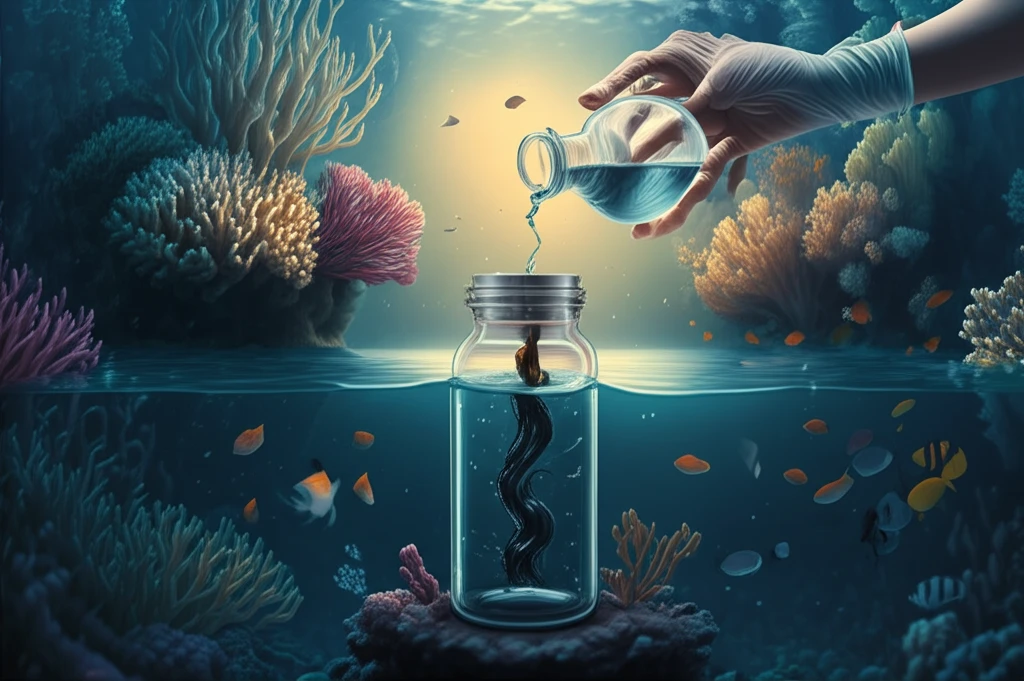
Is Your Water Safe? The Surprising Alternative to Toxic Preservatives in Seawater Samples
"Ditch the Mercury: Discover how benzalkonium chloride (BAC) could revolutionize seawater preservation, offering a safer, eco-friendly alternative for scientific research."
Imagine needing to collect seawater samples for crucial research, only to face the challenge of preserving them without harming the environment. For decades, scientists have relied on mercuric chloride (HgCl2) to inhibit microbial activity in these samples, ensuring accurate analysis back in the lab. However, this seemingly simple solution comes with a dark side: HgCl2 is highly toxic, accumulates in ecosystems, and requires costly, specialized disposal.
The environmental risks and financial burdens associated with mercuric chloride have fueled a global search for safer alternatives. Enter benzalkonium chloride (BAC), a widely used disinfectant found in everything from hospitals to household cleaners. But could this common antimicrobial agent effectively preserve precious seawater samples without the hazards of mercury?
A groundbreaking study published in "Ocean Science" investigates the potential of BAC as a suitable substitute for HgCl2. The findings could revolutionize how we approach seawater preservation, offering a pathway to more sustainable and environmentally conscious research practices. Let's dive into the details of this innovative research and explore the potential implications for our oceans and beyond.
The Mercury Problem: Why We Need a Change

Mercuric chloride's effectiveness as a preservative is undeniable. It halts microbial activity, preventing the alteration of key parameters like oxygen levels, inorganic carbon, and nutrients in seawater samples. This preservation is crucial for accurate analysis when immediate testing isn't possible. However, the cost of this convenience is steep.
- Environmental Hazard: Mercury contaminates aquatic environments, harming wildlife.
- Health Risks: Mercury exposure can lead to severe health problems in humans.
- Bioaccumulation: Mercury concentrates in the food chain, posing risks to top predators.
- Costly Disposal: Mercury waste requires specialized and expensive handling.
The Future of Seawater Preservation
The research on benzalkonium chloride as a seawater preservative marks a significant step forward in sustainable oceanographic research. While further studies are needed to fully understand its long-term effects and optimal applications, BAC holds immense promise as a safer, more environmentally friendly alternative to mercuric chloride. By embracing such innovations, we can minimize our impact on delicate marine ecosystems while continuing to unlock the mysteries of our oceans. The journey toward sustainable science is one small step at a time.
